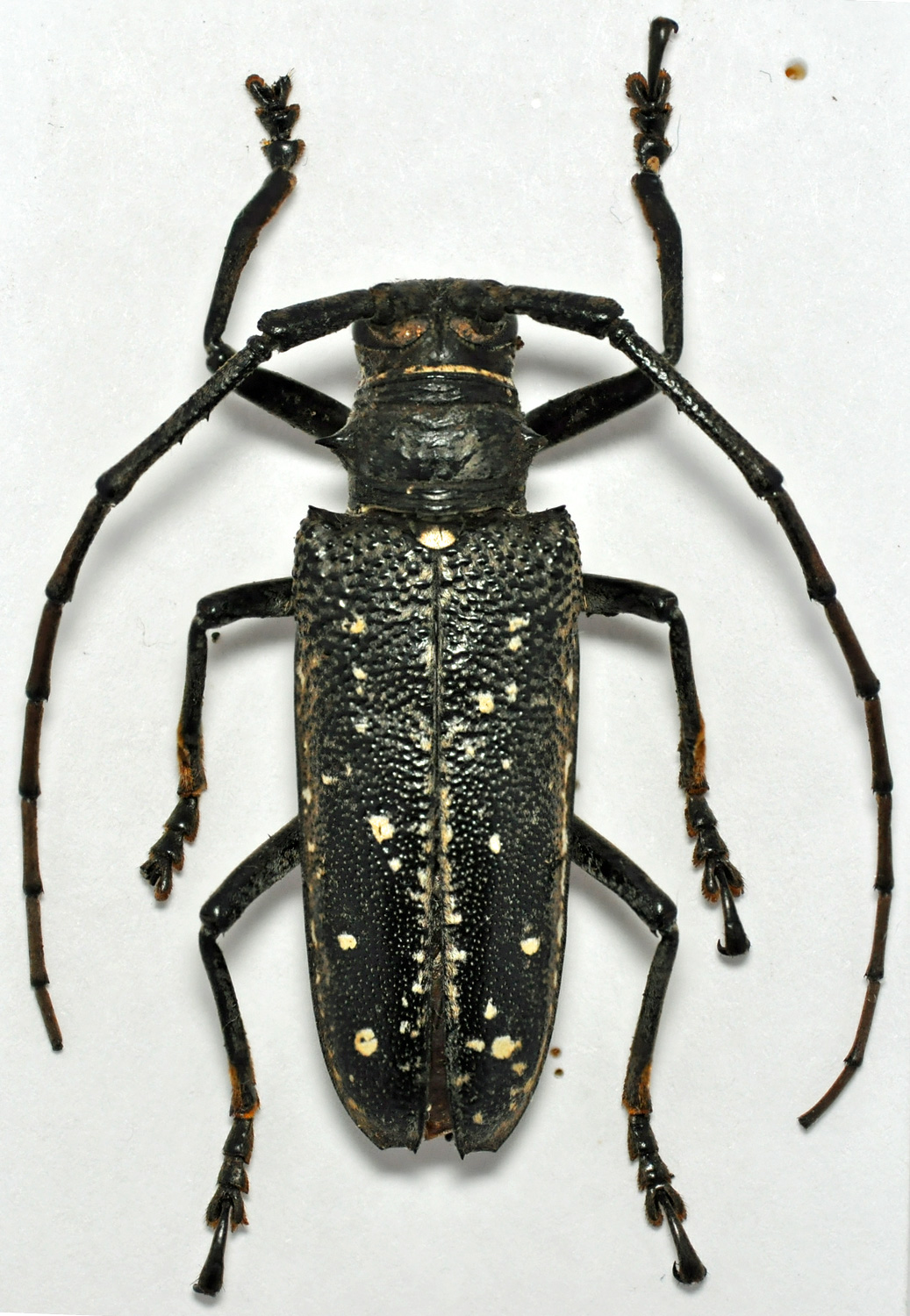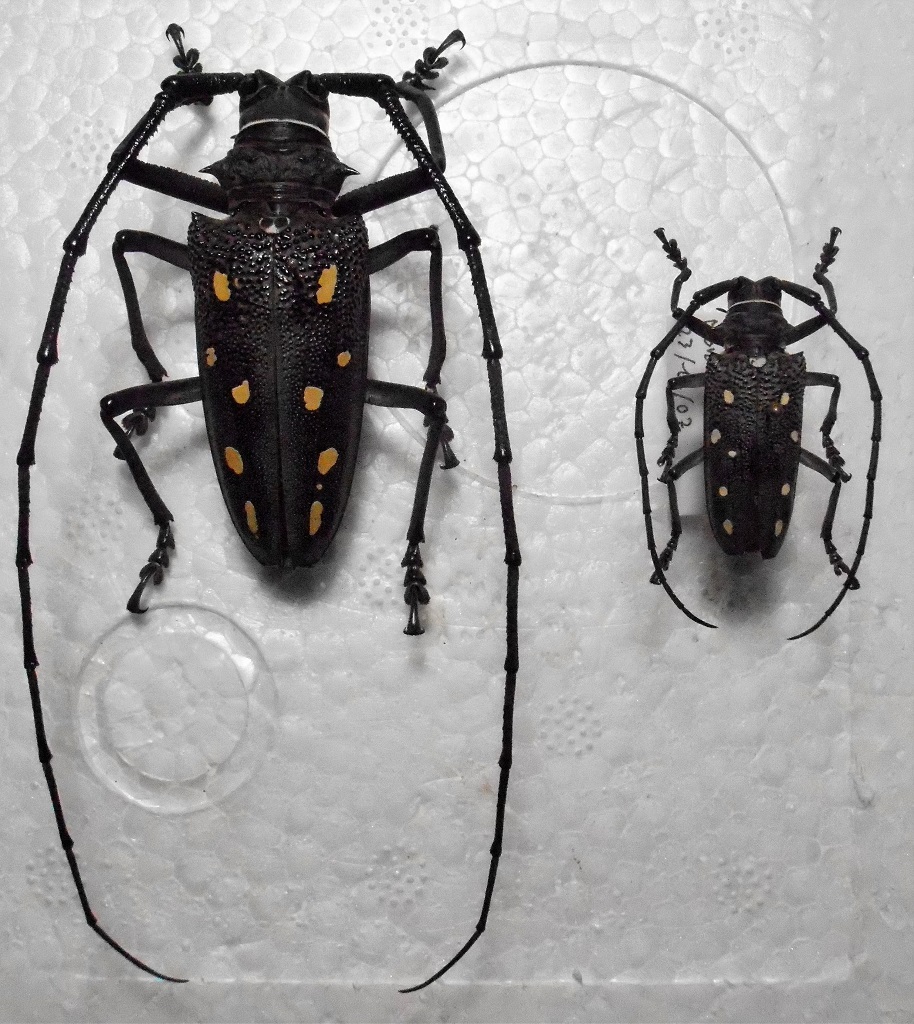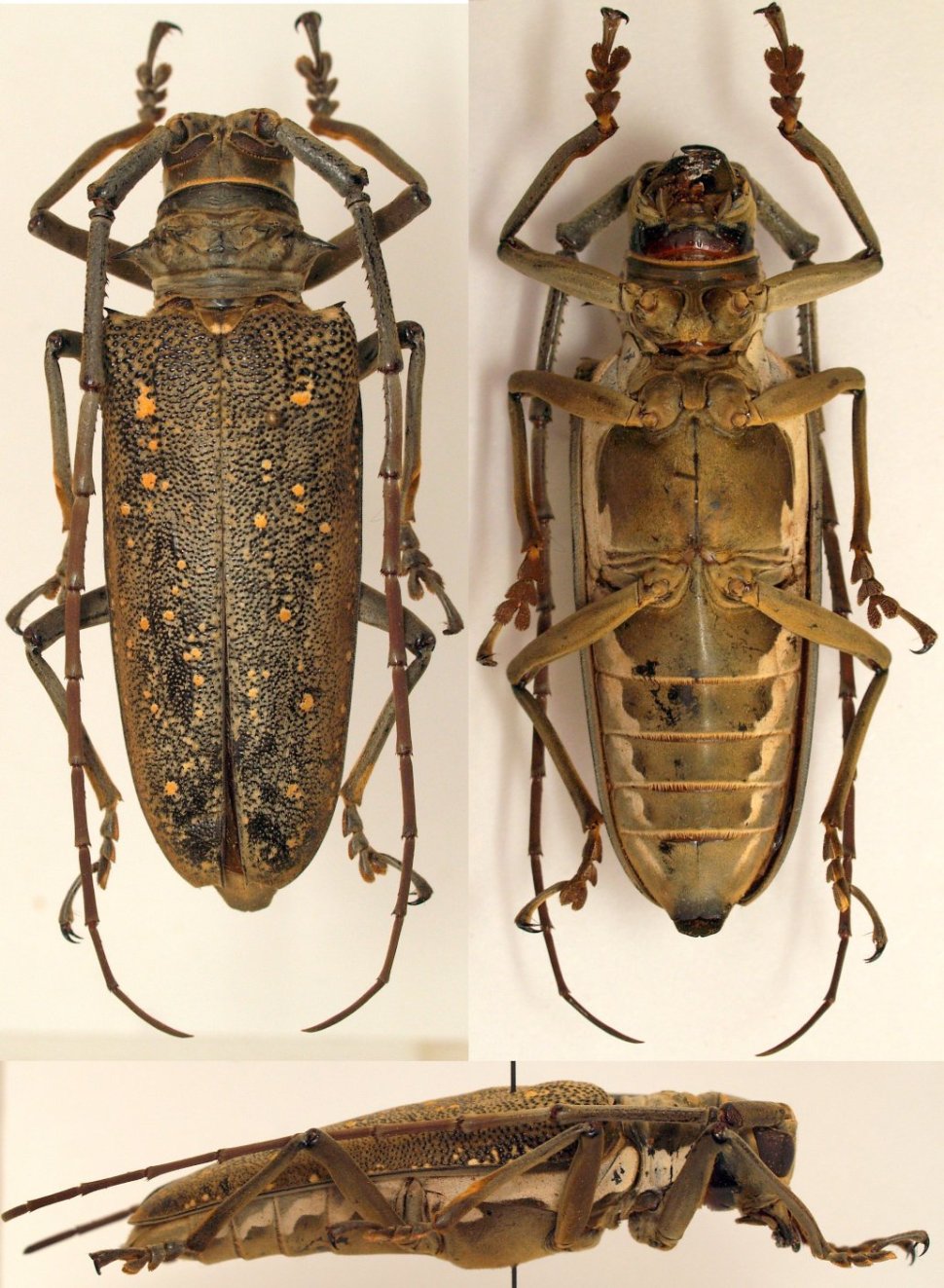| T O P I C R E V I E W |
| jplami |
Posted - 03/11/2018 : 20:02:45

496.81 KB
Buru
male, 32 mm
|
| 8 L A T E S T R E P L I E S (Newest First) |
| Gerard |
Posted - 04/11/2018 : 17:50:34
Un truc de plus pour Batocera, ta bête a des épines au troisième article. Je n’en vois pas sur les Apriona. |
| jplami |
Posted - 04/11/2018 : 15:50:33
Ok, you are right.
My specimen is a very small male of Batocera aeneonigra.
Furthermore, this morning, I asked to Eric Jiroux who revised Apriona.
He said it is not Apriona, and confirmed your determination. |
| Carlo Arrigo |
Posted - 04/11/2018 : 12:25:58
Here two male of Batocera frenchi van de Poll, 1886 from the same place, Garradunga, Queensland, Australia.

389.63 KB
In the large male the antennae are much more longer than the body than the small one |
| Carlo Arrigo |
Posted - 04/11/2018 : 12:17:41
A very small specimens of Batocera aeneonigra with broken antenna; in many Batocera, like in many else Cerambycidae, in the small male the antennae are just a little bit longer than the body, in the largest male the antennae could be twice or more longer than the body. |
| Gerard |
Posted - 04/11/2018 : 09:29:40
Je te mets une photo du Batocera de ma collection. Sur cette espèce les antennes sont assez courtes.

254.1 KB |
| jplami |
Posted - 04/11/2018 : 09:20:47
Du coup cette piste des Batocerini m'amène aussi à Apriona proche de l'A punctatissima de Sulawesi (apex des élytres, bandes blanches latérales dessous...) mais le dessin élytral est différent |
| jplami |
Posted - 04/11/2018 : 08:47:08
Effectivement, ça y ressemble.
J'avais pensé un moment à un Batocerini mais les antennes m'ont semblé beaucoup trop courtes, surtout pour un male (je n'ai pas vu de sillon sur le dernier segment abdominal). J'ai du me tromper. De plus le spécimen est petit. |
| Gerard |
Posted - 03/11/2018 : 21:13:52
Bonjour Jean Philippe ca fait un moment.
Ta bête pour moi c'est Batocera aeneonigra Thomson, 1859 |


